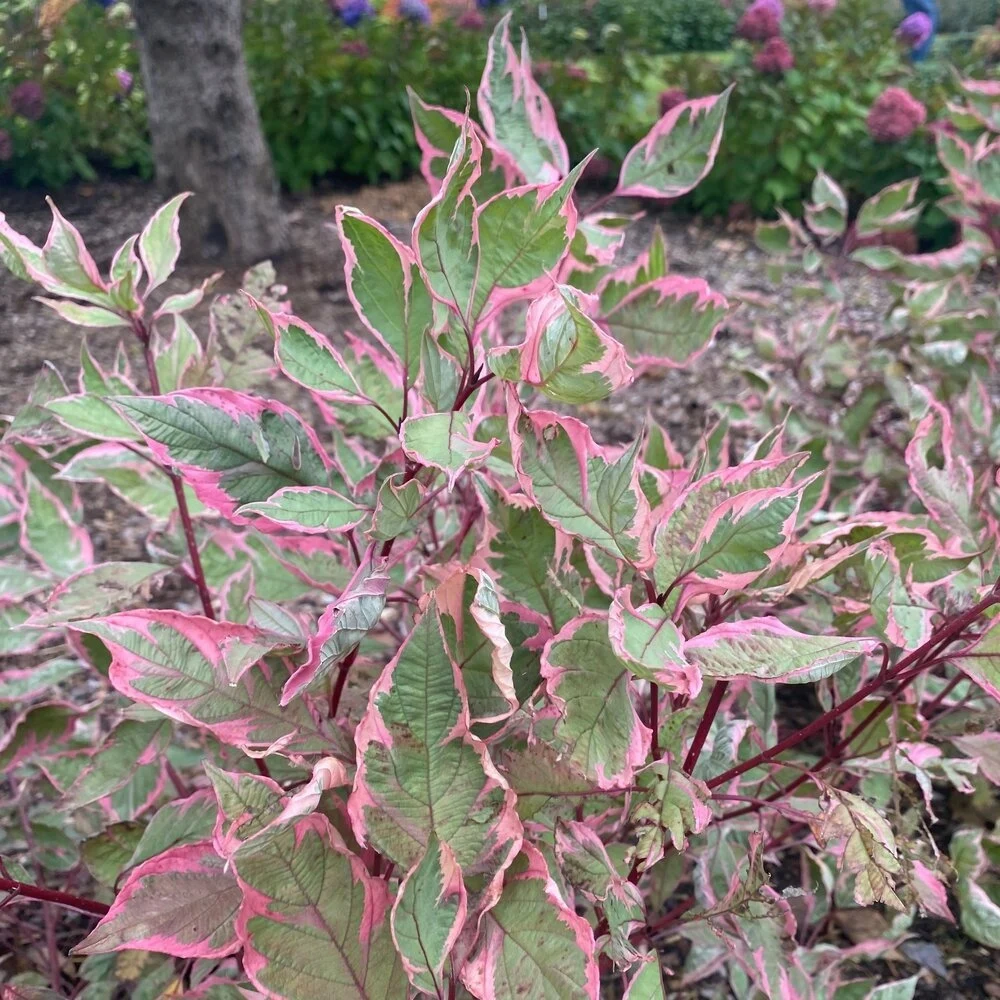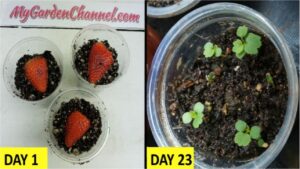The Sgt. Pepper Dogwood (Cornus sericea Sgt. Pepper) is a stunning ornamental shrub or small tree known for its vibrant red stems, white flowers, and beautiful fall foliage. This cultivar of the red-twig dogwood (Cornus sericea) is often appreciated for its striking color and ability to thrive in a variety of conditions. Here’s a care guide for growing and maintaining a Sgt. Pepper Dogwood Tree:
1. Sunlight
- Full Sun to Partial Shade: While Sgt. Pepper Dogwood will thrive in full sun (which enhances the red stem color), it can tolerate partial shade. It may grow taller and have less vibrant stem color in shadier conditions.
- Optimal Lighting: For the most vibrant stem color and flowering, aim for at least 4–6 hours of direct sunlight daily.
2. Soil Requirements
- Moist, Well-Drained Soil: This tree/shrub prefers moist, well-drained soil. It can tolerate a wide range of soil types, from sandy to clay, but good drainage is important to prevent root rot.
- Acidic to Neutral Soil: Sgt. Pepper Dogwood grows best in soil with a pH range of 5.0 to 7.0, though it is adaptable to slightly alkaline conditions as well.
- Soil Amendments: If you have heavy clay soil, amend it with organic material like compost to improve drainage and soil texture.
3. Watering
- Consistent Moisture: Dogwoods like consistently moist soil. Water regularly, especially during dry periods. Ensure the soil doesn’t dry out completely, as this can stress the plant.
- Avoid Waterlogging: While the plant prefers moist conditions, it does not like to be in waterlogged soil, so ensure it is well-drained.
4. Temperature and Hardiness
- USDA Hardiness Zones: Sgt. Pepper Dogwood is hardy in USDA Zones 3-8, making it suitable for a variety of climates.
- Cold Tolerance: This cultivar is quite cold-hardy and can handle freezing temperatures, making it ideal for northern climates.
5. Fertilizing
- Moderate Feeding: Dogwoods generally don’t need heavy fertilization. Apply a balanced, slow-release fertilizer in early spring before new growth begins, especially if the soil is nutrient-deficient.
- Compost: Using organic matter, such as compost, around the base of the tree can also enrich the soil.
6. Pruning
- Prune in Late Winter or Early Spring: The best time to prune Sgt. Pepper Dogwood is late winter or early spring before new growth begins. Prune out any dead, damaged, or crossing branches.
- Encourage New Growth: Regular pruning helps maintain the plant’s shape and encourages the growth of new red stems, which are most vibrant in younger branches.
- Removing Old Wood: Older stems may lose their bright red color, so removing some of the older wood can help rejuvenate the plant and maintain its colorful appearance.
7. Pests and Diseases
- Pests: Sgt. Pepper Dogwood can sometimes be affected by common pests such as aphids, scale insects, or leafhoppers. Keep an eye out for these pests and treat with insecticidal soap or neem oil as needed.
- Diseases: While generally resistant, dogwoods can be susceptible to fungal diseases, including powdery mildew and dogwood anthracnose. Ensure good air circulation around the plant and remove any affected leaves to prevent the spread of disease.
- Root Rot: Avoid overwatering, and ensure good soil drainage to prevent root rot.
8. Mulching
- Mulch: Applying a 2-3 inch layer of mulch around the base of the tree helps retain moisture, suppress weeds, and keep the roots cool during hot weather. Be sure to keep the mulch away from the trunk to avoid rot.
9. Support and Structure
- Shrub or Small Tree: Sgt. Pepper Dogwood can be grown as either a multi-stemmed shrub or a small tree with a central leader. If you choose to prune it into a tree form, select the strongest leader and remove competing stems.
- Staking: If you plant a young dogwood in a windy area, staking it for the first season or two may help it establish itself.
10. Fall Foliage
- Colorful Fall Foliage: In the fall, the leaves of the Sgt. Pepper Dogwood often turn shades of purple, red, or yellow, adding another layer of beauty to your landscape.
11. Flowering
- White Flowers in Spring: In late spring to early summer, the tree will produce small, white flowers that attract pollinators like bees and butterflies. The flowers are clustered together in flat-topped clusters.
12. Propagation
- Cuttings: Sgt. Pepper Dogwood can be propagated from softwood cuttings taken in late spring or early summer. Use a rooting hormone to help promote root growth.
- Division: You can also propagate by dividing older shrubs in early spring when new growth begins.
With its beautiful red stems, white flowers, and vibrant fall foliage, the Sgt. Pepper Dogwood is an excellent addition to landscapes, providing year-round interest. Proper care—including good soil, regular watering, and occasional pruning—will ensure that it thrives and remains healthy for years to come.


